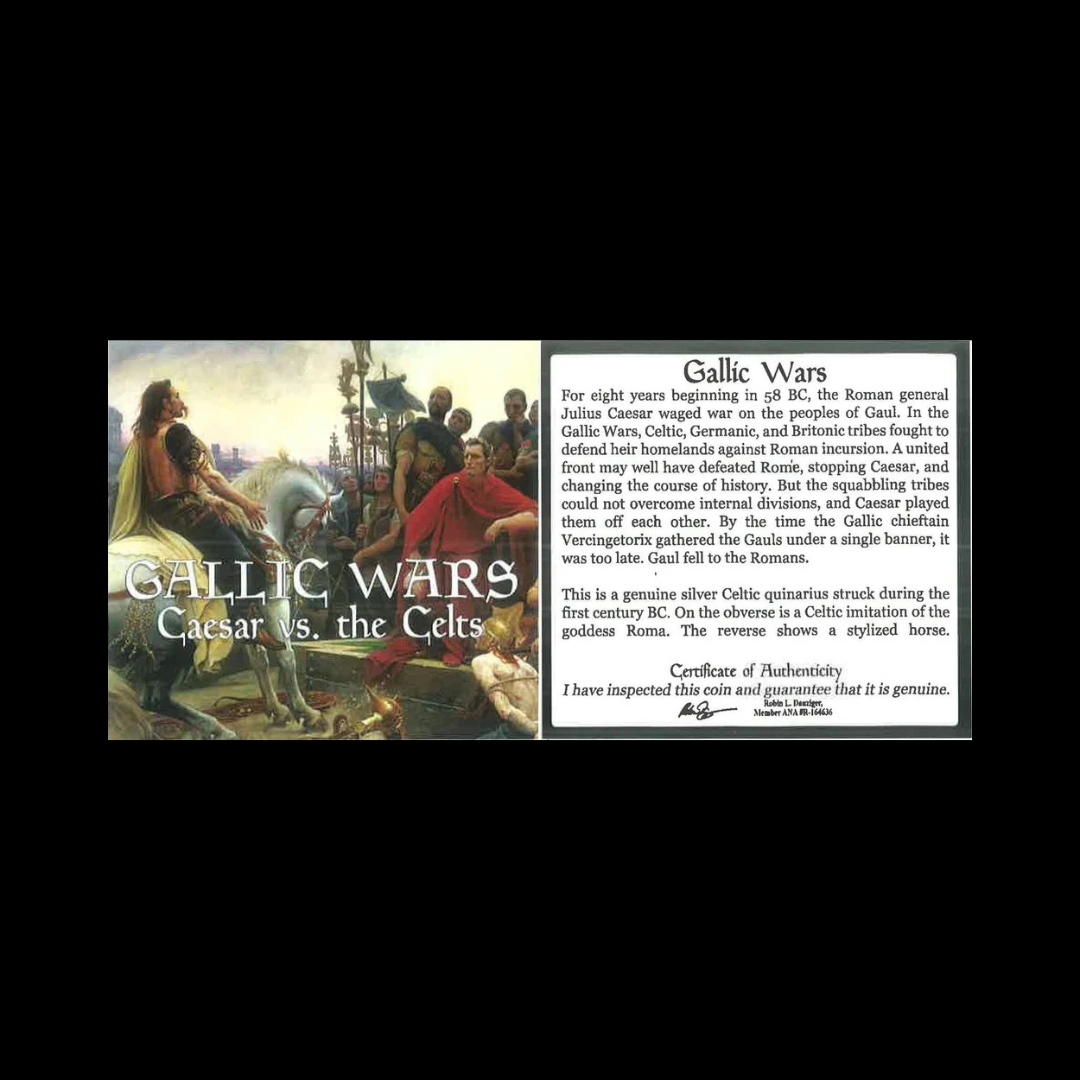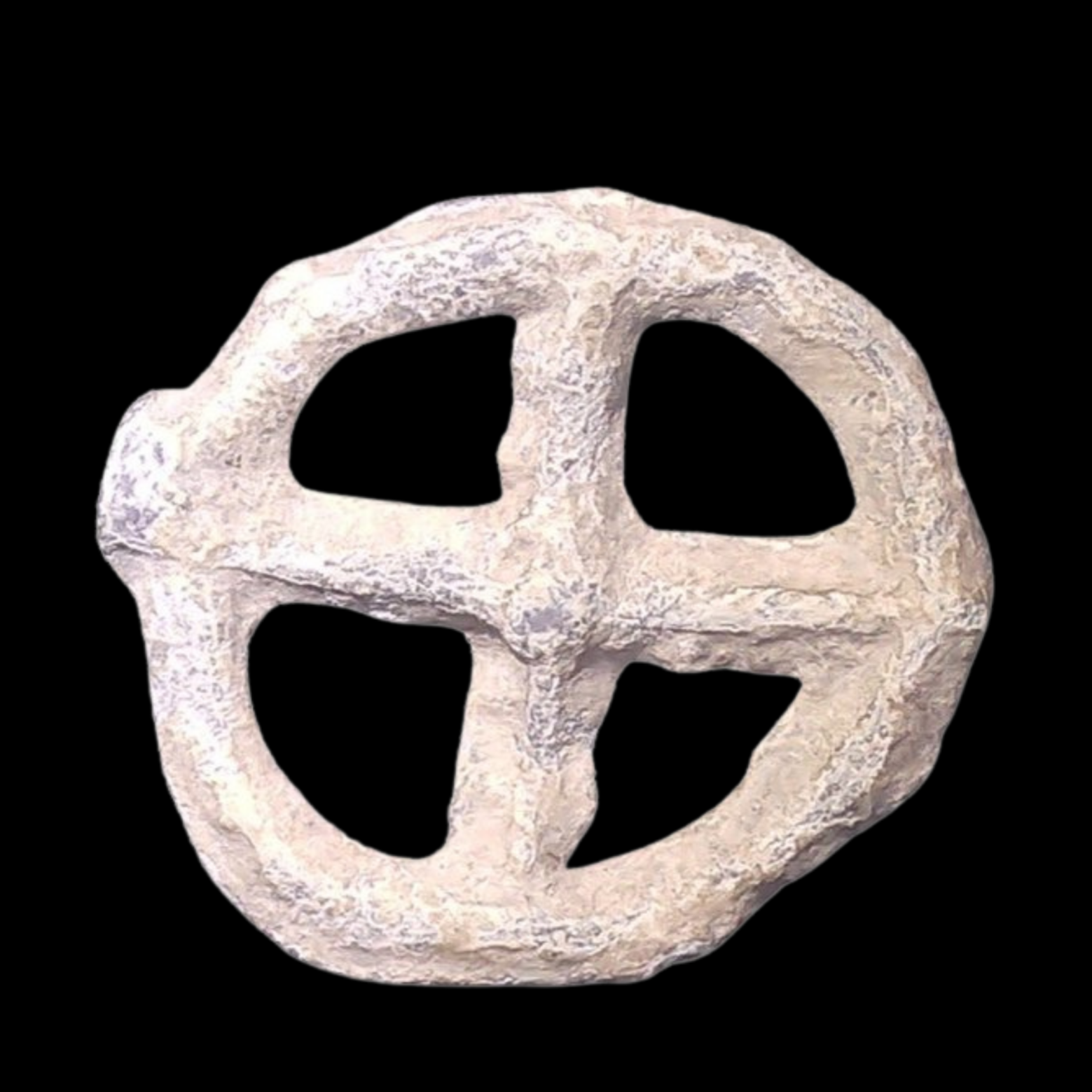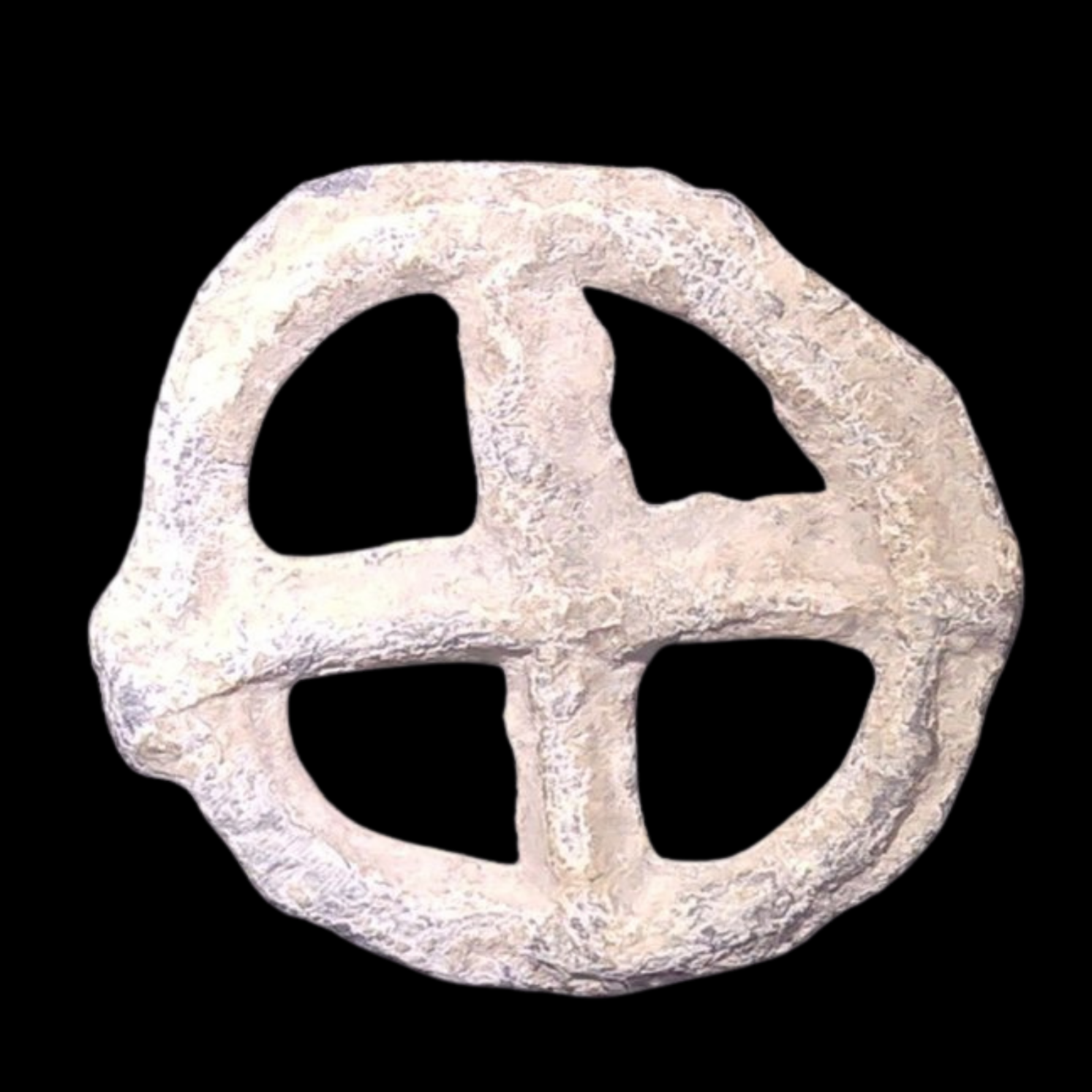 Image 1 of 3
Image 1 of 3

 Image 2 of 3
Image 2 of 3

 Image 3 of 3
Image 3 of 3




Ancient Celtic Silver Coin from Pre-Roman Gaul — Struck Over 2,000 Years Ago, Certified by NGC and Preserved as a Piece of Early European History
The coins shown are representative examples of the grade and type, but not the actual specimens for sale. For details on NGC’s grading standards and definitions, please refer to our NGC Grading page.
This small silver coin was produced by Celtic tribes living in ancient Gaul (primarily modern France) shortly before Caesar's conquest permanently altered the region's cultural landscape. The quinarius demonstrates how Celtic peoples adapted and reimagined Greek and Roman coin designs through their own distinctive artistic sensibilities, creating uniquely Celtic interpretations of classical motifs.
Coin Description:
Front side: Likely features a stylized human head or bust with distinctive Celtic artistic elements, potentially based on Greek or Roman prototypes but rendered in the characteristic Celtic abstract style
Back side: Probably depicts a horse, chariot, boar, or other symbolic animal important in Celtic culture, often with additional symbols like wheels, stars, or torcs (Celtic neck rings)
Technical Details:
Silver composition (AR = argentum, silver in numismatic terminology)
Denomination: Quinarius (a small silver coin worth half a denarius in the Roman system)
NGC certified in a slab holder (protective case)
Minted approximately 60-50 BCE, during the late La Tène period
Condition as certified by NGC
Historical Significance: This coin represents the sophisticated monetary system developed by Celtic tribes in Gaul during the decades immediately preceding Roman conquest. Celtic coinage initially emerged as imitations of Greek coins (particularly those of Philip II of Macedon), but evolved into distinctive styles that reflected Celtic aesthetic preferences for abstract, flowing designs. The date range of this coin (60-50 BCE) places it during the crucial period of Julius Caesar's Gallic Wars (58-50 BCE), when Roman armies systematically conquered the region. These coins thus represent the twilight of independent Celtic culture in Gaul, circulating just as Celtic tribal societies were being integrated into the expanding Roman world. The rapid adoption of Roman customs after conquest makes these coins important artifacts of pre-Roman Celtic civilization, demonstrating their advanced economic systems and artistic achievements before their absorption into Roman provincial culture.
The coins shown are representative examples of the grade and type, but not the actual specimens for sale. For details on NGC’s grading standards and definitions, please refer to our NGC Grading page.
This small silver coin was produced by Celtic tribes living in ancient Gaul (primarily modern France) shortly before Caesar's conquest permanently altered the region's cultural landscape. The quinarius demonstrates how Celtic peoples adapted and reimagined Greek and Roman coin designs through their own distinctive artistic sensibilities, creating uniquely Celtic interpretations of classical motifs.
Coin Description:
Front side: Likely features a stylized human head or bust with distinctive Celtic artistic elements, potentially based on Greek or Roman prototypes but rendered in the characteristic Celtic abstract style
Back side: Probably depicts a horse, chariot, boar, or other symbolic animal important in Celtic culture, often with additional symbols like wheels, stars, or torcs (Celtic neck rings)
Technical Details:
Silver composition (AR = argentum, silver in numismatic terminology)
Denomination: Quinarius (a small silver coin worth half a denarius in the Roman system)
NGC certified in a slab holder (protective case)
Minted approximately 60-50 BCE, during the late La Tène period
Condition as certified by NGC
Historical Significance: This coin represents the sophisticated monetary system developed by Celtic tribes in Gaul during the decades immediately preceding Roman conquest. Celtic coinage initially emerged as imitations of Greek coins (particularly those of Philip II of Macedon), but evolved into distinctive styles that reflected Celtic aesthetic preferences for abstract, flowing designs. The date range of this coin (60-50 BCE) places it during the crucial period of Julius Caesar's Gallic Wars (58-50 BCE), when Roman armies systematically conquered the region. These coins thus represent the twilight of independent Celtic culture in Gaul, circulating just as Celtic tribal societies were being integrated into the expanding Roman world. The rapid adoption of Roman customs after conquest makes these coins important artifacts of pre-Roman Celtic civilization, demonstrating their advanced economic systems and artistic achievements before their absorption into Roman provincial culture.








